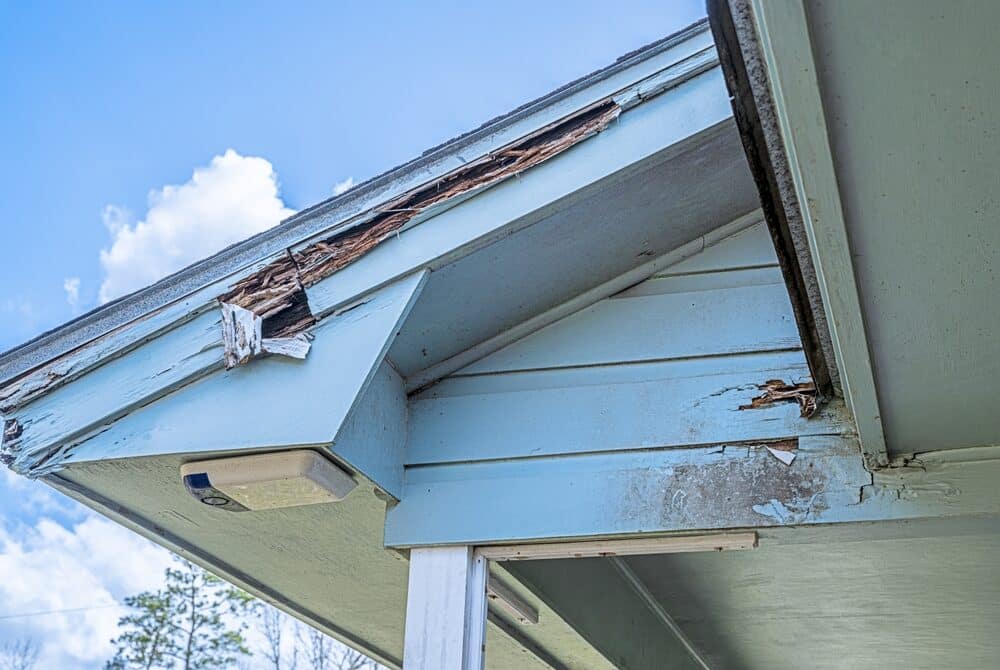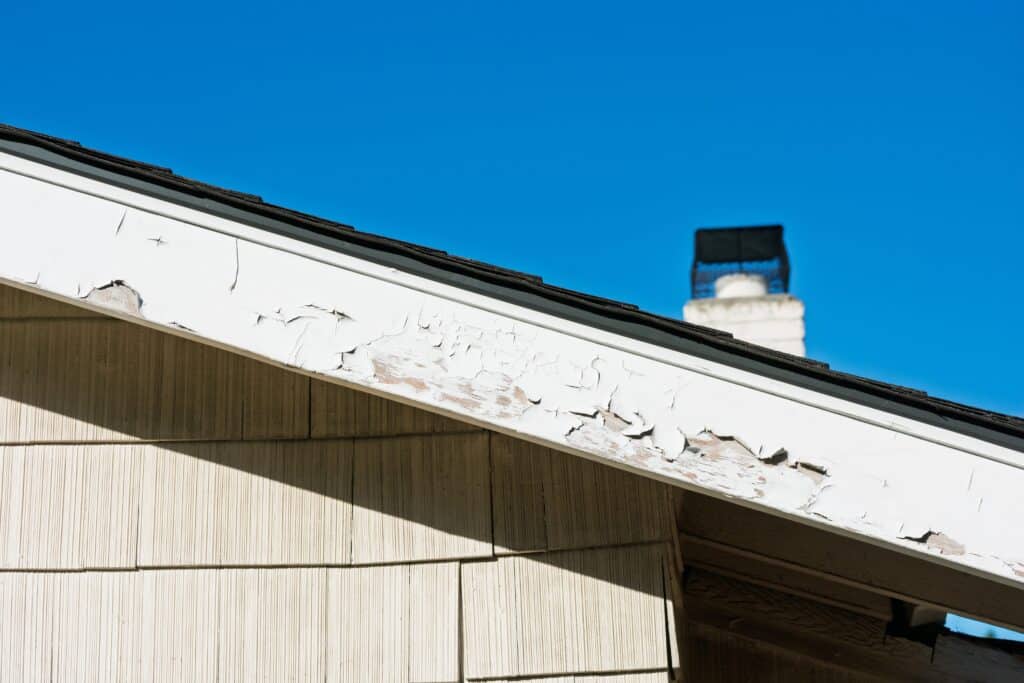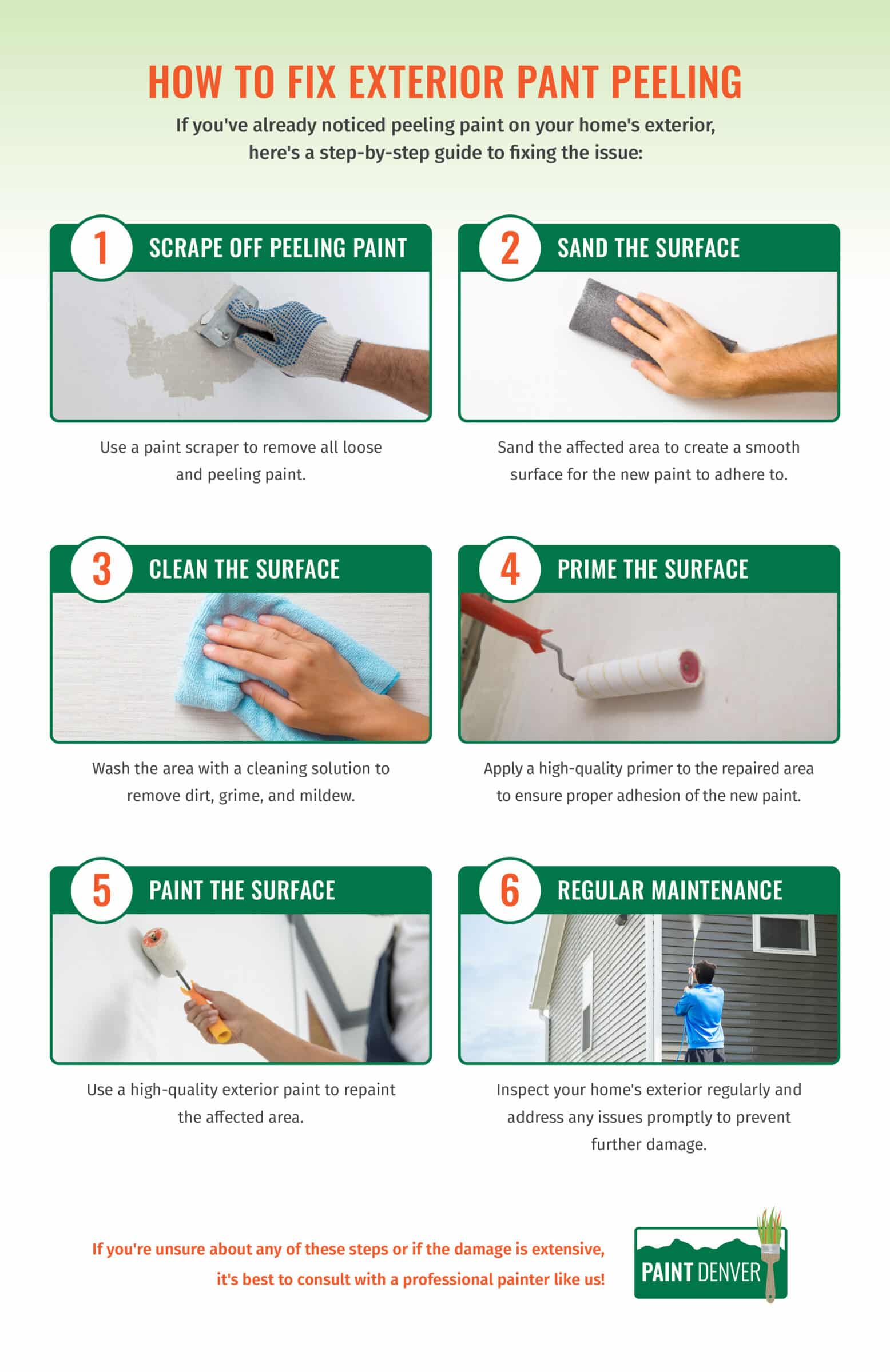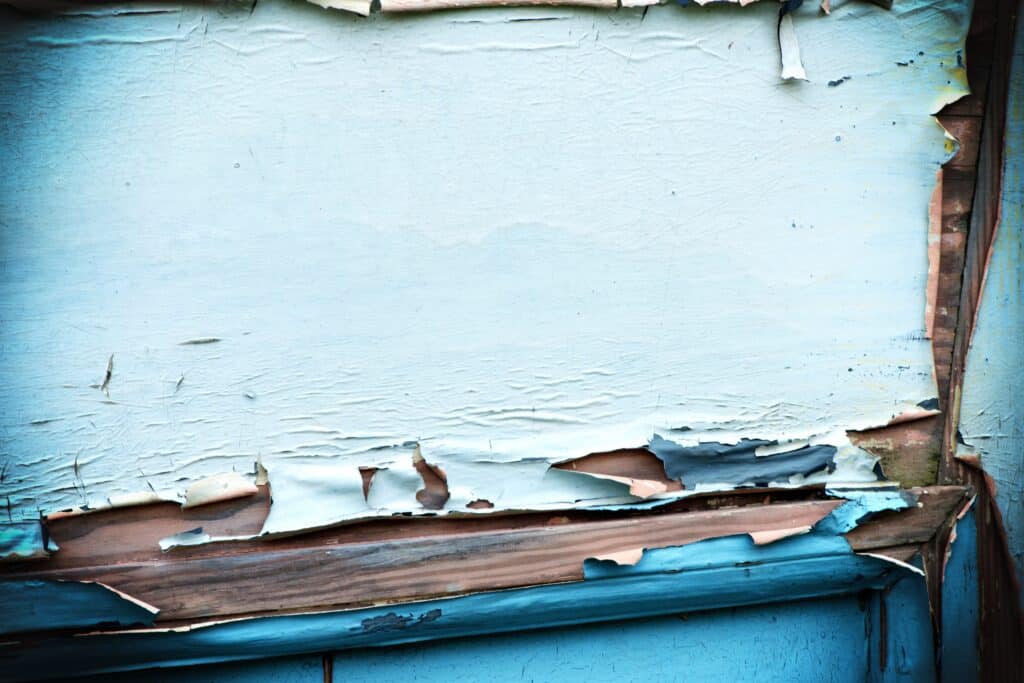
Why Does Paint Peel!? Why Outdoor Paint Peeling Happens and How to Fix It
Ever noticed outdoor paint peeling off your home’s exterior? It’s not just an eyesore; it’s a sign of underlying issues that can lead to more significant problems. In this guide, we’ll delve into the common causes of paint peeling, especially in Colorado’s unique climate, and provide practical tips to prevent and fix this issue.
My Home Has Outdoor Paint Peeling, Oh No!
Seeing your home’s exterior paint peeling can be disheartening. It’s more than just an aesthetic issue; it’s a sign of underlying problems that could escalate if left unchecked. Don’t let your home’s beauty and structural integrity suffer. Let’s dive into the common culprits behind paint peeling and explore practical solutions to restore your home’s facade.

Why Does Paint Peel?
Outdoor paint peeling can be a frustrating problem for homeowners. However, understanding the underlying causes of questions like: “why does paint peel?” can help you prevent and address the issue effectively. Let’s explore the common reasons why exterior paint peels.
The Culprit: Water Damage
Water is the primary enemy of exterior paint. When moisture seeps into the paint layer, it can cause the paint to blister, peel, or crack. Water can enter your home’s exterior paint through various means, including rain, snow, humidity, and even leaky pipes.
Colorado’s Extreme Weather Conditions
Colorado’s unique climate, with its hot, dry summers and cold, snowy winters, can exacerbate outdoor paint peeling. Rapid temperature fluctuations can cause paint to expand and contract, leading to cracks and peeling. Additionally, the intense UV rays from the sun can degrade paint over time.
Poor Preparation and Application
Improper preparation and application techniques can also contribute to paint peeling. If the surface isn’t properly cleaned, sanded, and primed, the paint may not adhere correctly. Using low-quality paint or applying it too thickly can also lead to peeling.
Incompatible Paint Types
Mixing different types of paint can lead to adhesion problems and peeling. For example, applying latex paint over oil-based paint without proper preparation can cause the paint to peel.
Aging Paint
Over time, paint can deteriorate and lose its protective properties. If your home’s exterior paint is several years old, it may be time for a fresh coat.
Poor DIY Job
A poorly executed DIY paint job can lead to a variety of issues, including exterior peeling paint. Mistakes like skipping primer, applying too many coats, or not allowing enough drying time can all contribute to paint failure.
Tips to Avoid Outdoor Paint Peeling
To prevent your home’s exterior paint from peeling, consider these practical tips:
- Thorough Preparation: Ensure the surface is clean, dry, and free of any loose paint or debris before applying a new coat.
- Prime Properly: Use a high-quality primer that is compatible with your chosen paint. Priming helps the paint adhere better to the surface.
- Choose the Right Paint: Select a high-quality exterior paint that is suitable for your climate and the specific surface you’re painting.
- Apply the Correct Number of Coats: Follow the manufacturer’s instructions for the recommended number of coats.
- Allow Adequate Drying Time: Give the paint ample time to dry between coats.
- Regular Maintenance: Inspect your home’s exterior regularly for signs of wear and tear, such as peeling paint or cracks.
- Professional Painting Services: Consider hiring a professional painter like Paint Denver to ensure a high-quality paint job.
How to Fix Exterior Paint Peeling on My Home in 6 Steps

If you’ve noticed peeling paint on your home’s exterior, here’s a step-by-step guide to address the issue:
1. Scrape Off Peeling Paint
Use a paint scraper to carefully remove all loose and peeling paint. Be gentle to avoid damaging the underlying surface.
2. Sand the Surface
Sand the repaired area to create a smooth surface for better paint adhesion. Use a medium-grit sandpaper to remove any rough edges or unevenness.
3. Clean the Surface
Power wash your house before painting to remove dirt, grime, and mildew. For stubborn stains or mildew, you can use a mild detergent solution. Rinse the surface thoroughly and allow it to dry completely.
4. Prime the Surface
Apply a high-quality exterior primer to the repaired area. Priming helps the new paint adhere better and provides a uniform surface for a smooth finish.
5. Paint the Surface
Use a high-quality exterior paint that is suitable for your climate and the specific surface you’re painting. Apply the paint in thin, even coats, allowing each coat to dry completely before applying the next. Learn how to use paint samples to find your perfect color!
6. Regular Maintenance
Regularly inspect your home’s exterior for signs of wear and tear, such as peeling paint, cracks, or water damage. Address any issues promptly to prevent further damage.

Colorado’s Best Exterior Painters Are Here to Help
So, that’s a lot to process, we know. That’s just another reason to let the pros handle any outdoor paint-peeling issues you’re facing! Our team of experienced painters is equipped to handle any exterior painting project, no matter how complex. We’ll diagnose the problem, prepare the surface, and apply a high-quality paint job that will protect your home for years to come.
Don’t let peeling paint diminish your home’s curb appeal. Contact us today for a free estimate.
